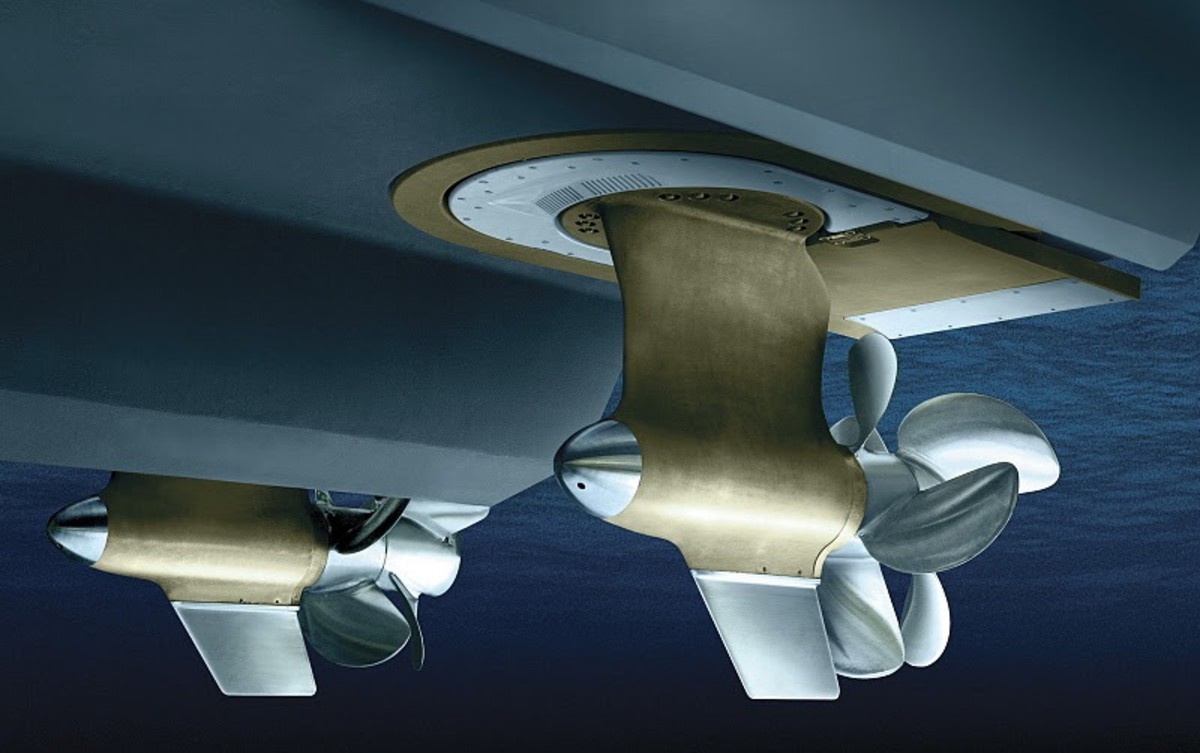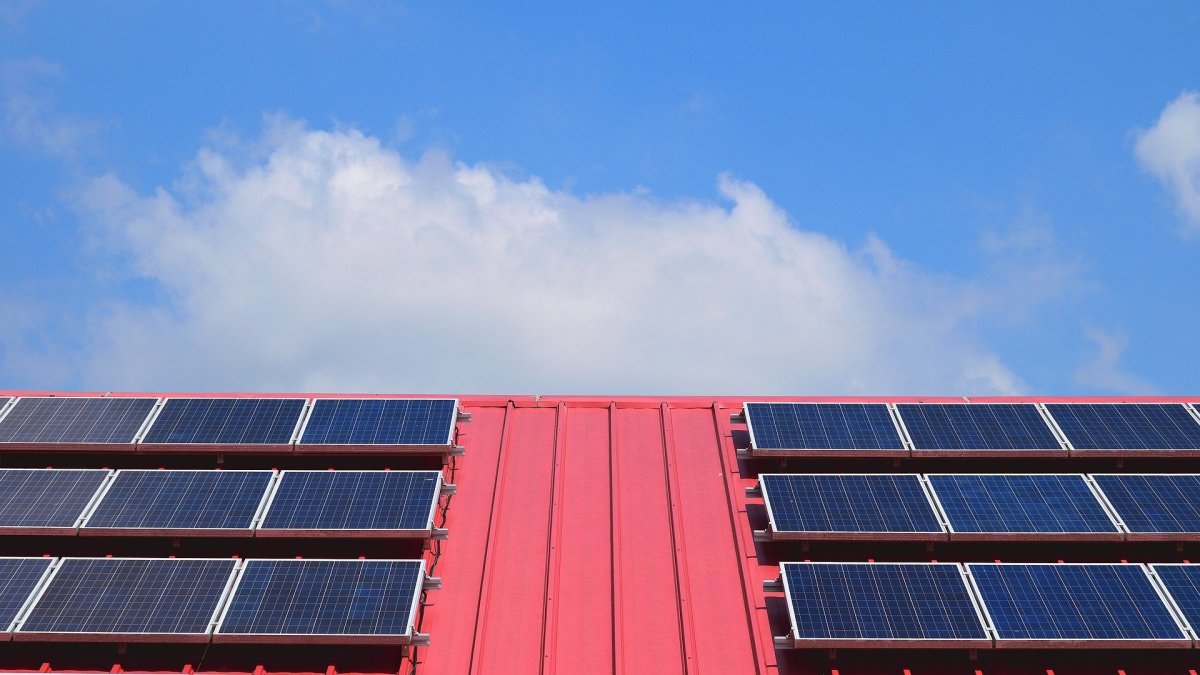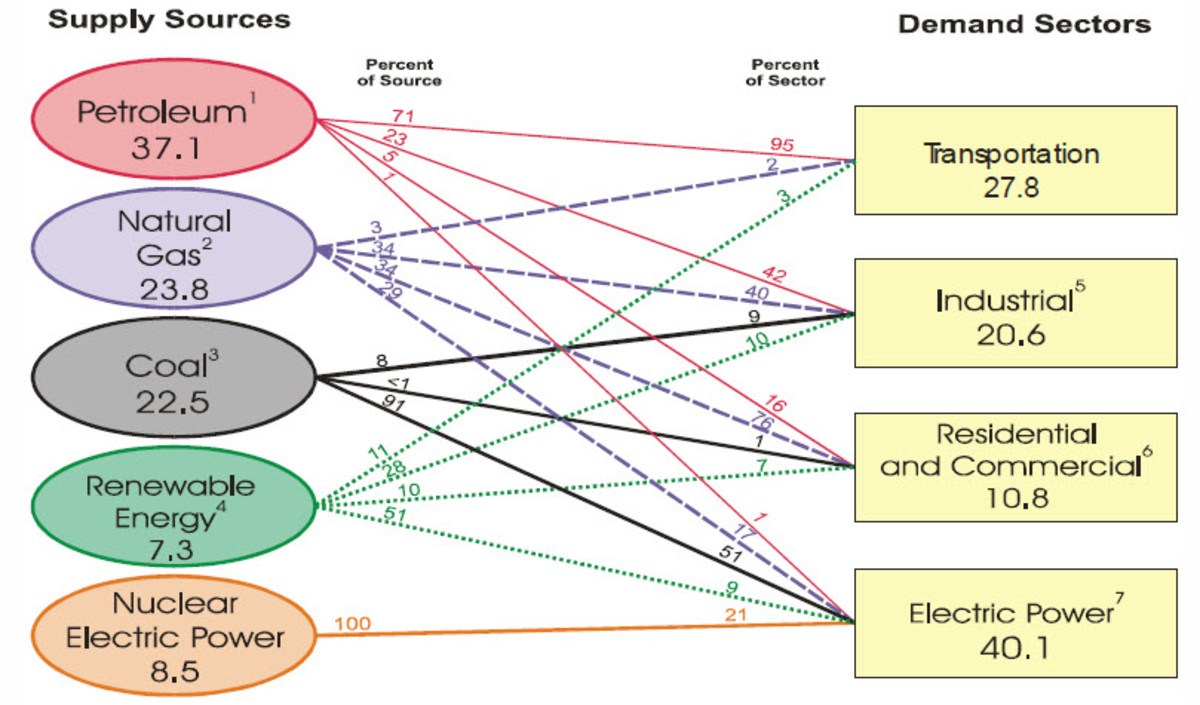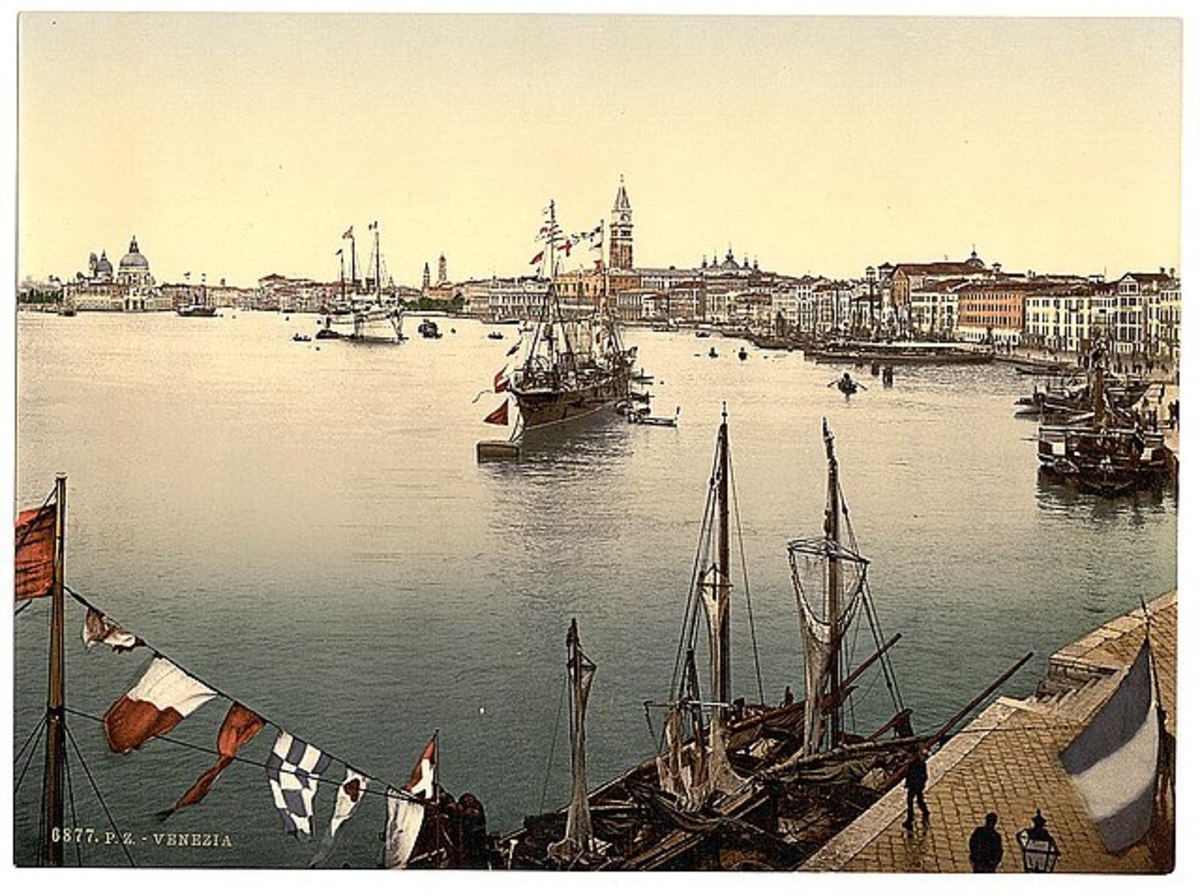Small Wind Electric Systems for Your Home or Farm
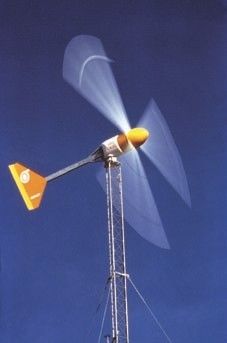
Exploring Ways to Use Wind Energy
Can I use wind energy to power my home?
This question is being asked across the country as more people look for affordable and reliable sources of electricity. Small wind electric systems can make a significant contribution to our nation's energy needs. These systems are also nonpolluting. Small wind electric systems can also be used for a variety of other applications, including water pumping on farms and ranches.
In 2008, wind machines in the United States generated a total of 52 billion kilowatthours, about 1.3% of total U.S. electricity generation. Although this is a small fraction of the Nation's total electricity production, it was enough electricity to serve 4.6 million households or to power the entire State of Colorado.
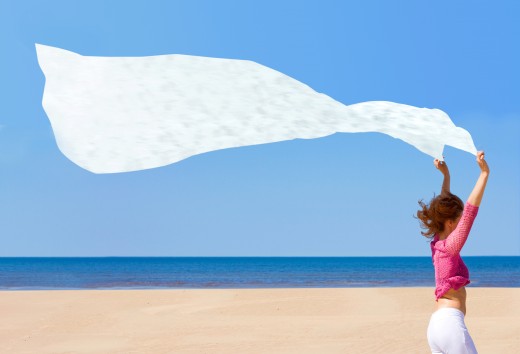
A small wind electric system will work for you if:
- There is enough wind where you live.
- Tall towers are allowed in your neighborhood or rural area.
- You have enough space.
- Your electricity bills tend to be high.
Why Should I Choose Wind?
Wind energy systems are one of the most cost-effective home-based renewable energy systems.
Depending on your wind resource, a small wind energy system can lower your electricity bill by 50% to 90%, help you avoid the high costs of extending utility power lines to remote locations, prevent power interruptions, and it is nonpolluting.
Is There Enough Wind on My Site?
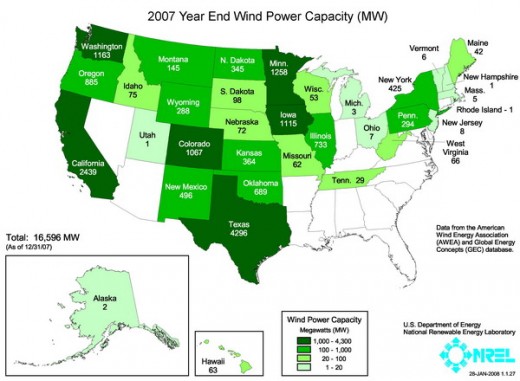
The highest average wind speeds in the United States are generally found along seacoasts, on ridgelines, and on the Great Plains; however, many areas have wind resources strong enough to power a small wind turbine economically. Another way to indirectly quantify the wind resource is to obtain average wind speed information from a nearby airport. Airport wind data are generally measured at heights about 20-33 ft (6-10 m) above ground.
United States wind energy sector growth 1981-2007
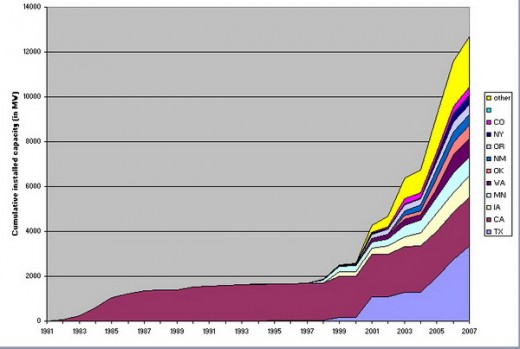
What Size Wind Turbine Do I Need?
The size of the wind turbine you need depends on your application. Small turbines range in size from 20 watts to 100 kilowatts (kW). The smaller or "micro" (20- to 500-watt) turbines are used in a variety of applications such as charging batteries for recreational vehicles and sailboats.
Turbines used in residential applications can range in size from 400 watts to 100 kW (100 kW for very large loads), depending on the amount of electricity you want to generate. For residential applications, you should establish an energy budget to help define the turbine size you will need. Because energy efficiency is usually less expensive than energy production, making your house more energy efficient first will probably be more cost effective and will reduce the size of the wind turbine you need.
Wind turbine manufacturers can help you size your system based on your electricity needs and the specifics of local wind patterns.
A typical home uses approximately 10,000 kilowatt-hours (kWh) of electricity per year (about 830 kWh per month). Depending on the average wind speed in the area, a wind turbine rated in the range of 5 to 15 kW would be required to make a significant contribution to this demand.
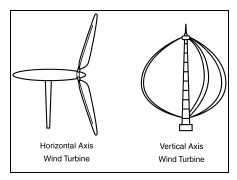
Types of Wind Turbines
There are two basic types of wind turbines: horizontal axis wind turbines and vertical axis wind turbines. Horizontal axis turbines (more common) need to be aimed directly at the wind. Because of this, they come with a tailvane that will continuously point them in the direction of the wind. Vertical axis turbines work whatever direction the wind is blowing, but require a lot more ground space to support their guy wires than horizontal axis wind turbines.
Home Made Wind Generator
Components of Wind Energy Systems
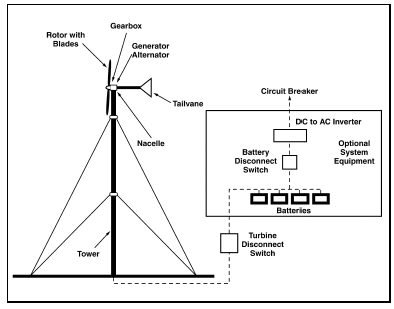
These basic components include:
# A rotor, consisting of blades with aerodynamic surfaces. When the wind blows over the blades, the rotor turns, causing the generator or alternator in the turbine to rotate and produce electricity.
# A gearbox, which matches the rotor speed to that of the generator/alternator. The smallest turbines (under 10 kW) usually do not require a gearbox.
# An enclosure, or nacelle, which protects the gearbox, generator and other components of the turbine from the elements.
# A tailvane or yaw system, which aligns the turbine with the wind.
If you plan on building a horizontal axis wind turbine, you will need a tower on which to mount the turbine (vertical axis turbines are usually built on the ground).
Several types of towers are available:
# Guyed lattice towers, where the tower is permanently supported by guy wires. These towers tend to be the least expensive, but take up a lot of space on a yard. A radio broadcast tower is a good example of a guyed lattice tower.
# Guyed tilt-up towers, which can be raised and lowered for easy maintenance and repair.
# Self-supporting towers, which do not have guy wires. These towers tend to be the heaviest and most expensive, but because they do not require guy wires, they do not take up as much space on a yard.
Relationship between wind speed and wind power.
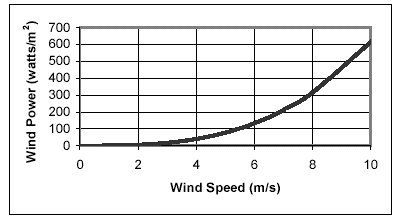
An important factor in how much power your wind turbine will produce is the height of its tower. The power available in the wind is proportional to the cube of its speed. This means that if wind speed doubles, the power available to the wind generator increases by a factor of 8 (2 x 2 x 2 = 8).
Wind speeds increase with height.
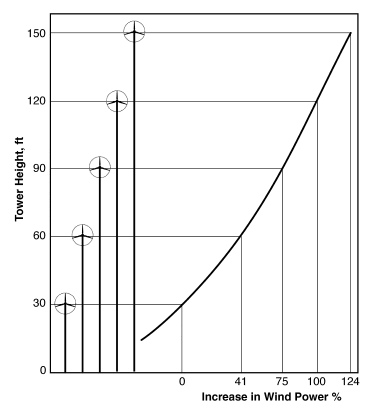
Since wind speed increases with height, increases to the tower height can mean enormous increases in the amount of electricity generated by a wind turbine.
Theoretical power production for small wind turbines when the wind speed is 10 m/s.
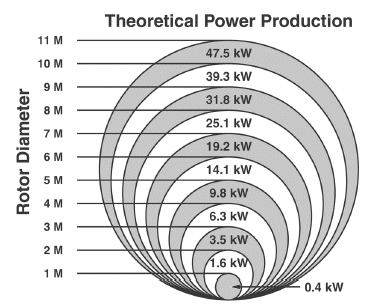
Please note that the values for power production shown on picture are theoretical values, and only intended for illustrative purposes. The actual power production from a wind turbine will be influenced by many other factors, such as: the efficiency that the wind turbine is able to extract energy from the wind; the elevation at which the turbine is located; and other design characteristics of the wind turbine.
Maintenance
A wind turbine requires periodic maintenance such as oiling and greasing, and regular safety inspections. Check bolts and electrical connections annually; tighten if necessary. Once a year check wind turbines for corrosion and the guy wires supporting the tower for proper tension.
If the turbine blades are wood, paint to protect from the elements. Apply a durable leading edge tape to protect the blades from abrasion due to dust and insects in the air. If the paint cracks or the leading edge tape tears away, the exposed wood will quickly erode. Moisture penetrating into the wood causes the rotor to become unbalanced, stressing the wind generator. Inspect wooden blades annually, and do any repairs immediately.
If there is a small wind turbine system in your area, you may be able to obtain useful information from its owners about the annual electrical output of the system and, possibly, wind speed data. Such information could be extremely valuable as an alternative to installing a wind resource evaluation system.
Wind Energy Industry Leaders on Future of U.S. Wind Power
The World's Fastest Growing Energy Source
Great Stuff on Amazon
Windmax HY400 500 Watt Max 12-Volt 5-Blade Residential Wind Generator Kit






